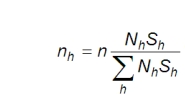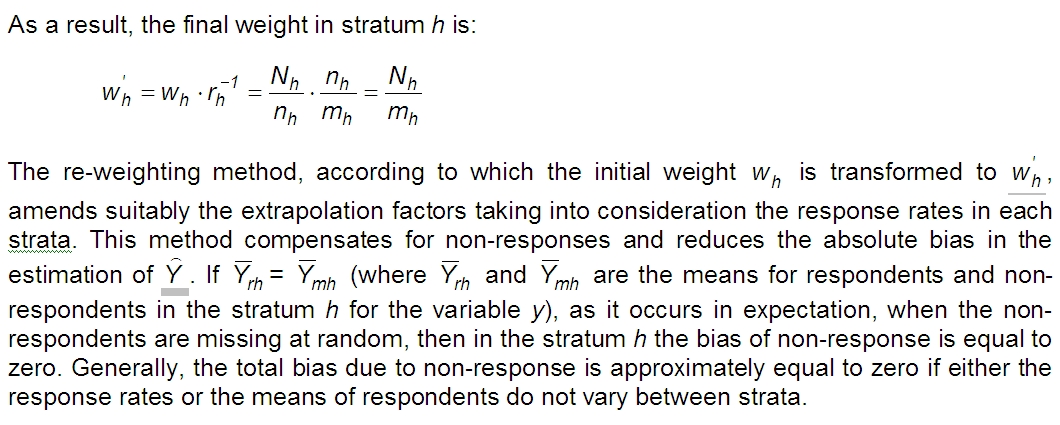| 1. Bellhouse (1988). Systematic sampling. In Handbook of Statistics, Vol. 6, (Eds. P.R. Krishnaiah and C.R. Rao). Amsterdam: Elsevier Science, 125-145 2. Cochran, W.G. (1977). Sampling Techniques, New York: John Wiley and Sons 3. Dalenious T., and Hodges, J.L (1959). Minimum variance stratification. JASA, 54,88-101 4. Deming, W.E. (1953). On a probability mechanism and the bias of non-response. JASA, 48, 743-772 5. Evans, W.D. (1951). On stratification and optimum allocation. JASA, 46, 95-104 6. Hansen, M.H., Hurwitz, W.N., Madow, W.G. (1953). Sample Survey Methods and Theory. Vol. I, New York: John Wiley and Sons 7. Hess, I, Sethi, V.K., and Balakrishnan,T.R (1966). Stratification: A practical investigation. JASA, 61, 74-90 8. Holt, D., and Elliot, D. (1991). Methods of weighting for unit non-response. The Statistician, 40, 333-342 9. Kalton, G (1983). Models in the Practice of Survey Sampling. International Statistical Review, 51, 175-188 10. Kalton, G. and Kasprzyk, D. (1986). The Treatment of Missing Survey Data. Survey Methodology, 12, 1-16. 11. Kalton, G. and Flores – Gervantes, I. (2003). Weighting Methods. Journal of Official Statistics, 19, 81-97. 12. Kish, L., (1965). Survey Sampling, New York: John Wiley and Sons 13. Kish, L., and Frankel, M.R. (1974). Inference from complex samples. Journal of the Royal Statistical Society, A, 139,80-95 14. Kish, L., and Anderson, D.W. (1978). Multivariate and multipurpose stratification. JASA, 73, 24-34 15. Kish, L., (1987). Statistical Design and Research, New York: John Wiley and Sons 16. Kish, L., (1988). Multipurpose Sample Designs. Survey Methodology, 14, 19-32 17. Kish, L., (1989). Sampling Methods for Agricultural Surveys, Rome: Food and Agricultural Organization of the United Nations 18. Kish, L., (1992). Weighting for Unequal Pj. Journal of Official Statistics, 8, 183-200 19. Kish, L (1995).Questions/Answers (1978-1994), Paris: INSEE, International Association of Survey Statisticians 20. Little, R.J.A. (1982). Models for non-response in sample surveys. JASA, 77, 237-250 21. Little, R.J.A. (1986). Survey non-response adjustments for estimates of means. International Statistical Review, 54, 139-157 22. Madow, L. H (1946). Systematic sampling and its relation to other sampling designs. JASA, 41, 207-214 23. Murthy, M.N. and Rao, J.T.(1988). Systematic sampling with illustrative examples. In Handbook of Statistics, Vol. 6, (Eds. P.R. Krishnaiah and C.R. Rao). Amsterdam: Elsevier Science, 147-185 24. Royall, R.M and Herson, H.J. (1973). Robust Estimation in Finite Populations I. JASA, 68, 880-889 25. Royall, R.M and Herson, H.J. (1973). Robust Estimation in Finite Populations II: Stratification on a Size Variable. JASA, 68, 890-893 26. Sarndal, Swensson, and Wretman (1992). Model Assisted Survey Sampling. New York: Springer-Verlag 27. Thomsen, I. (1977). On the effect of stratification when two stratifying variables are used. JASA, 72, 149-153 |



